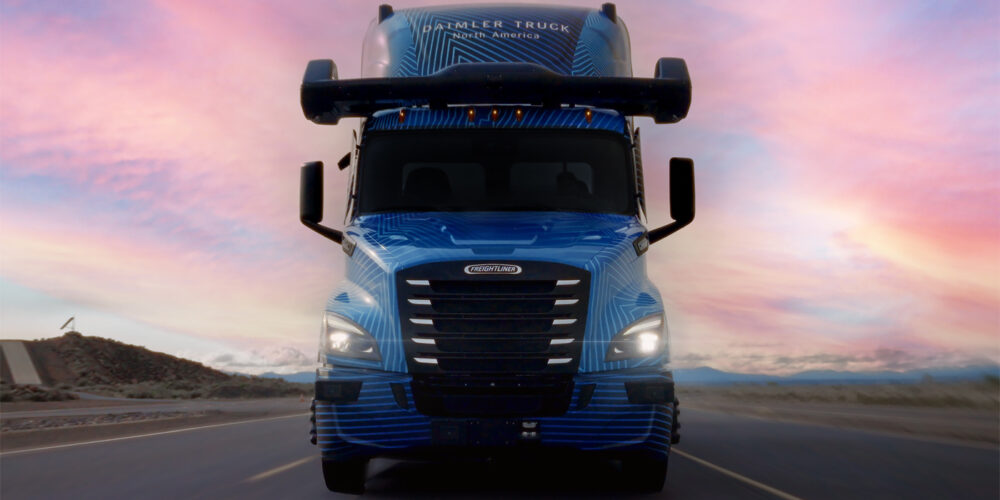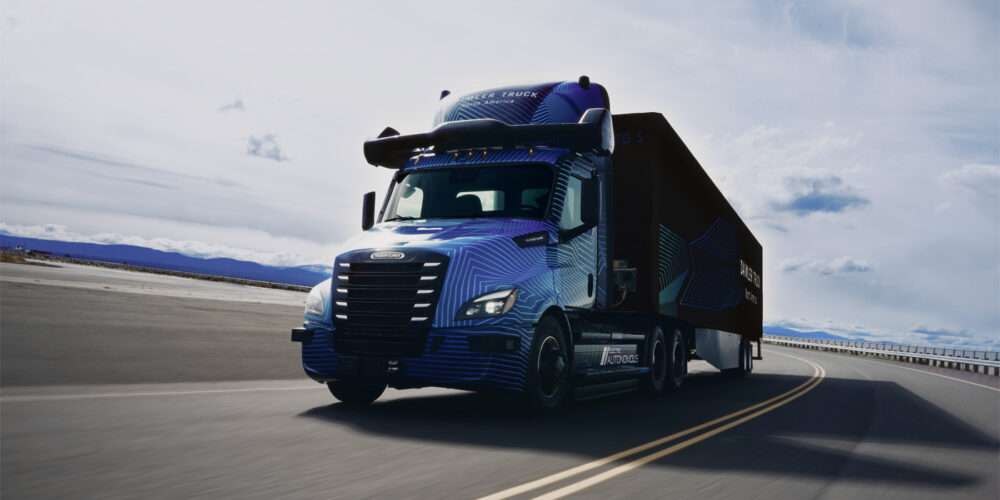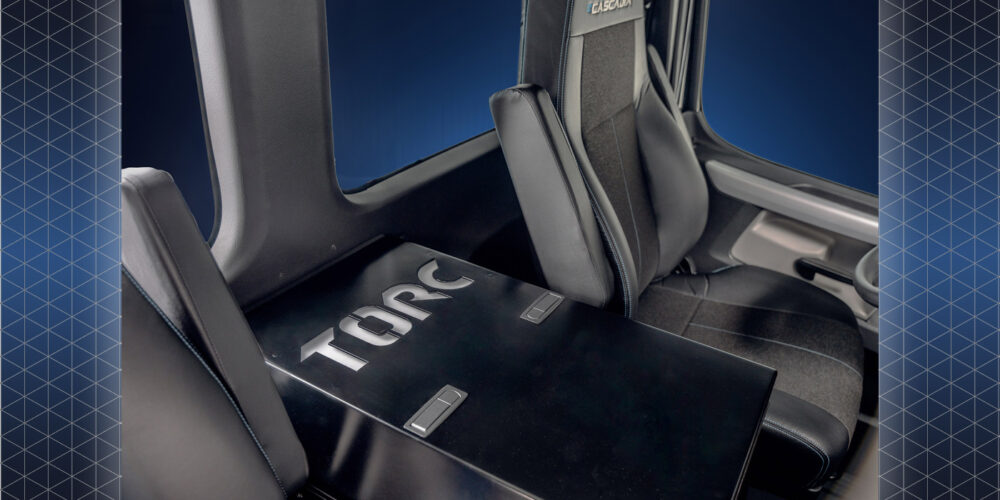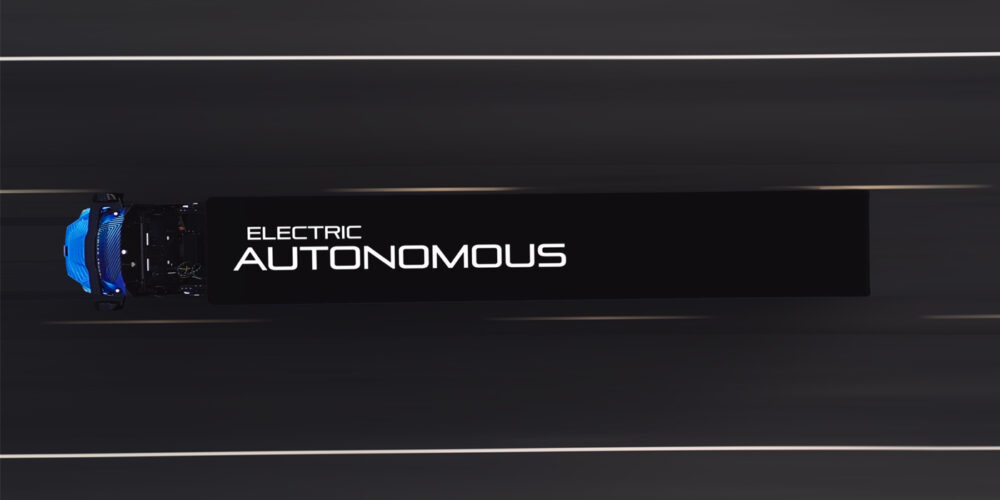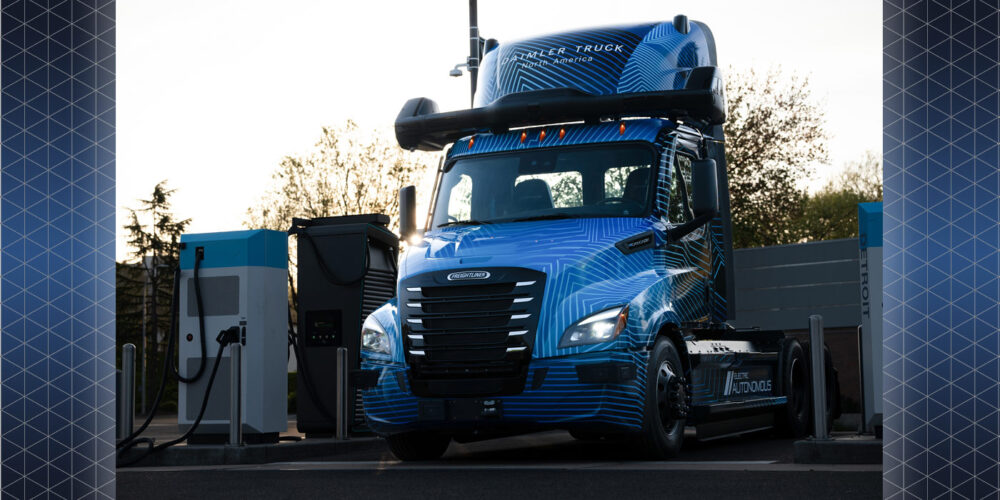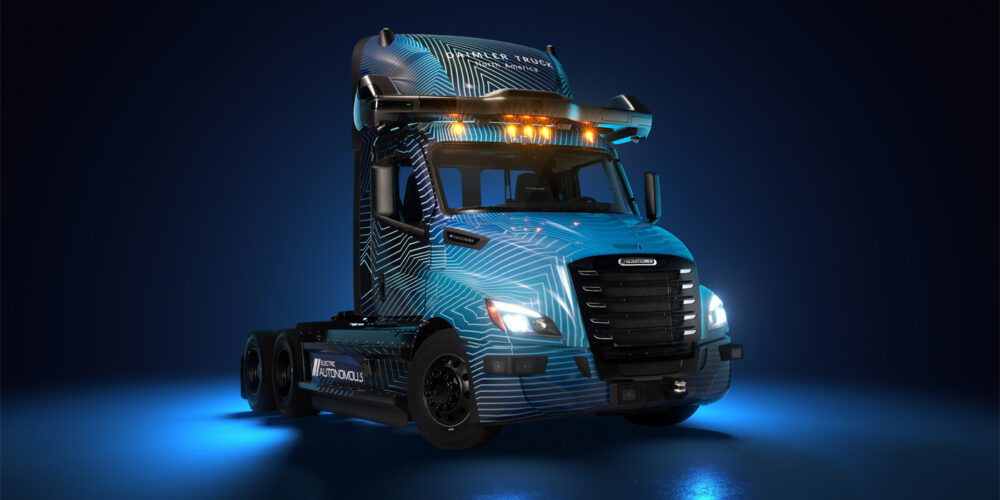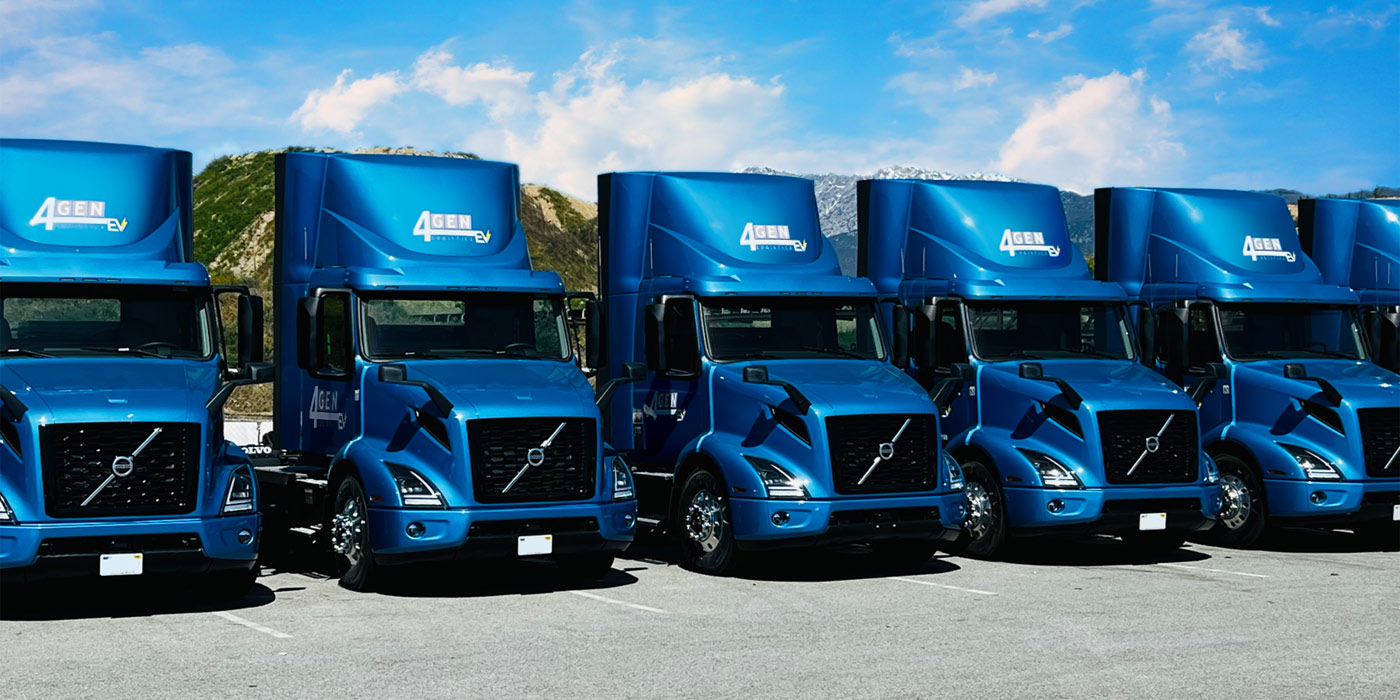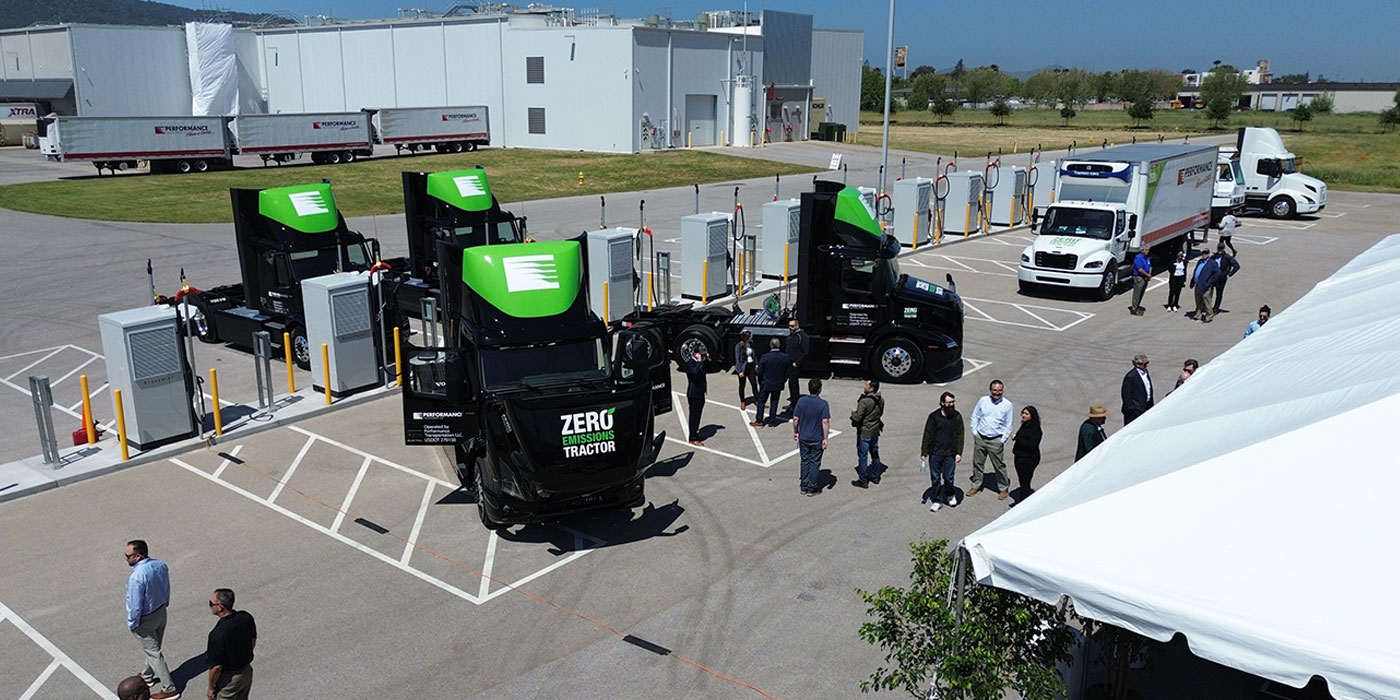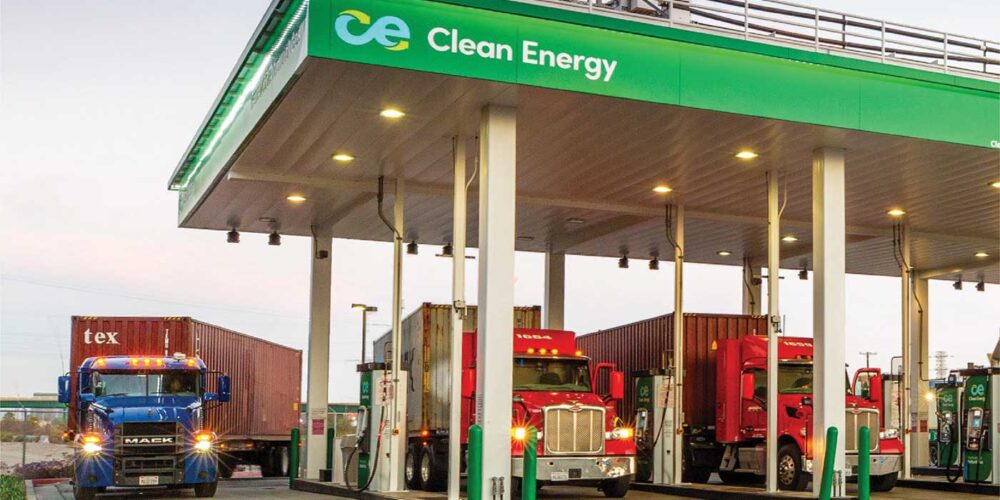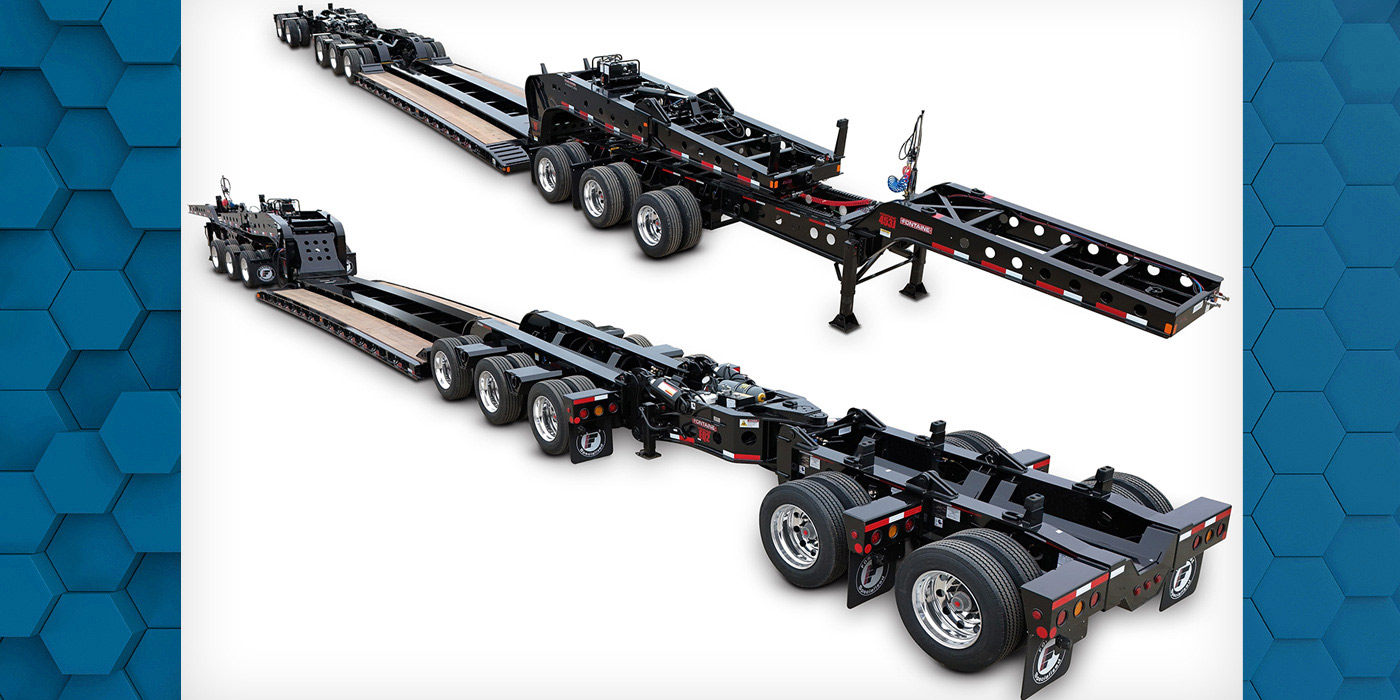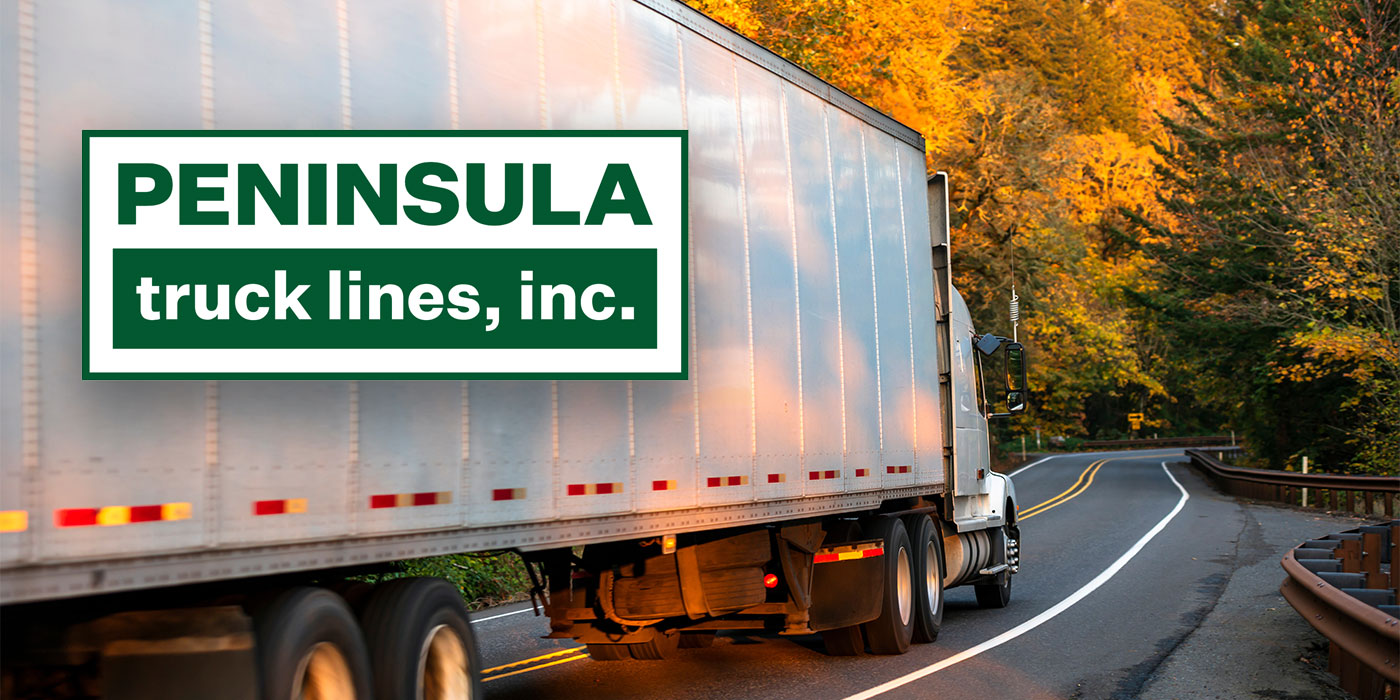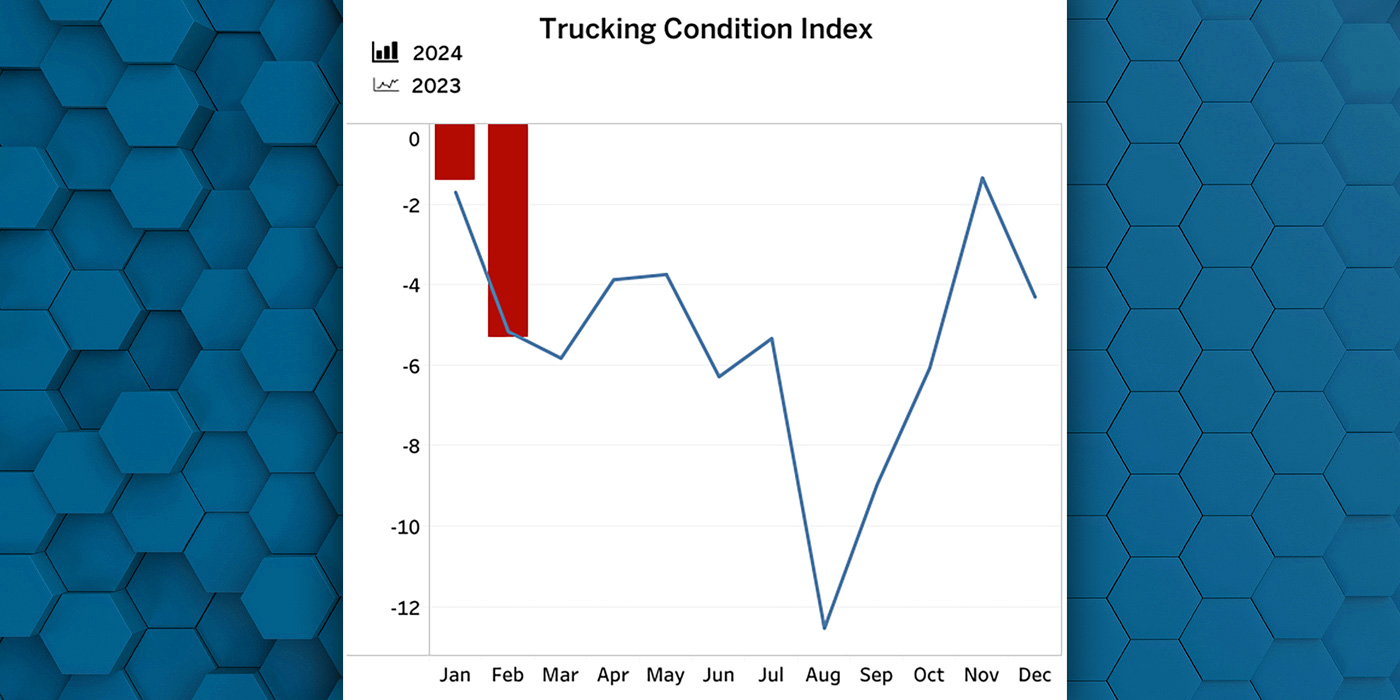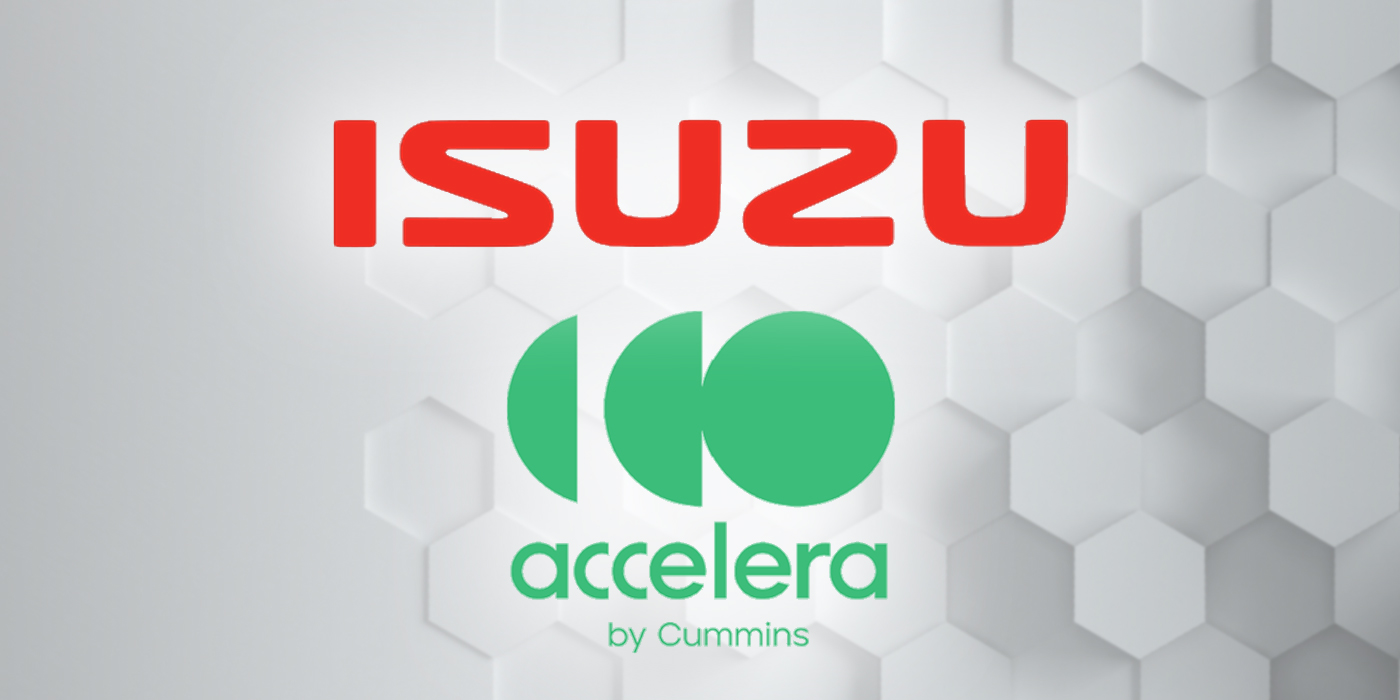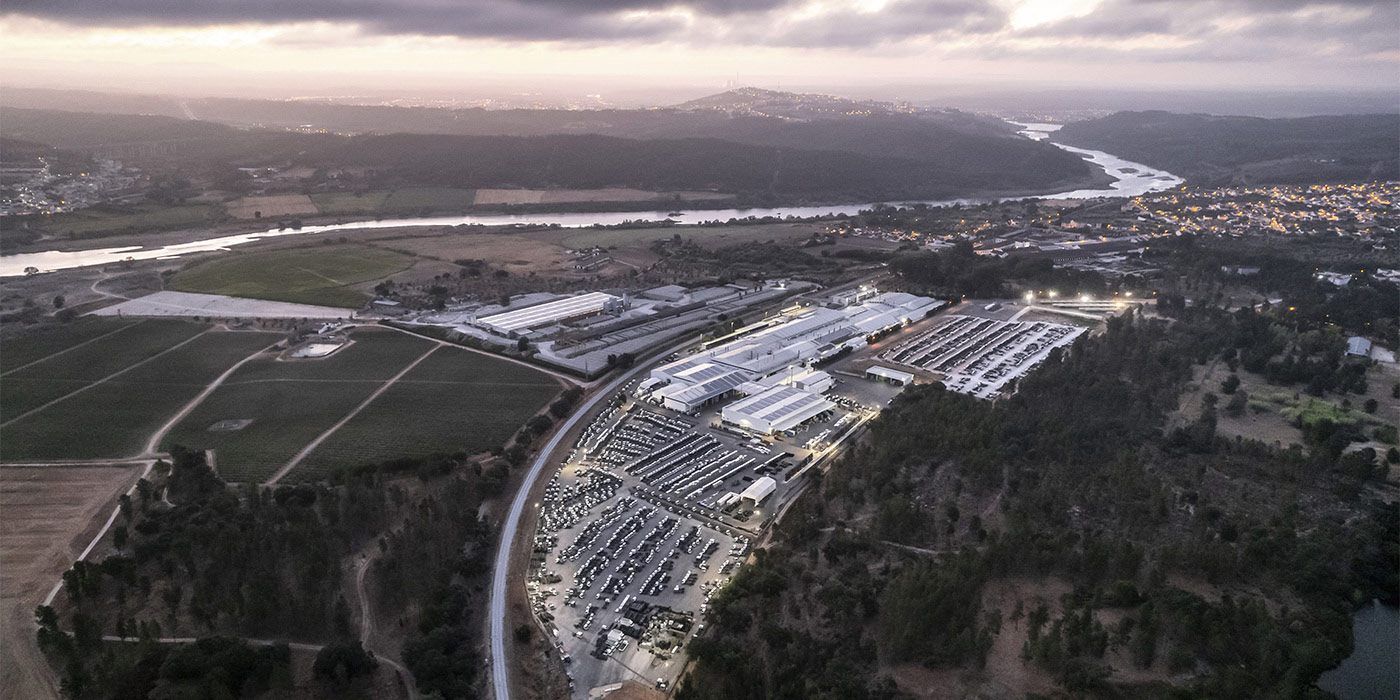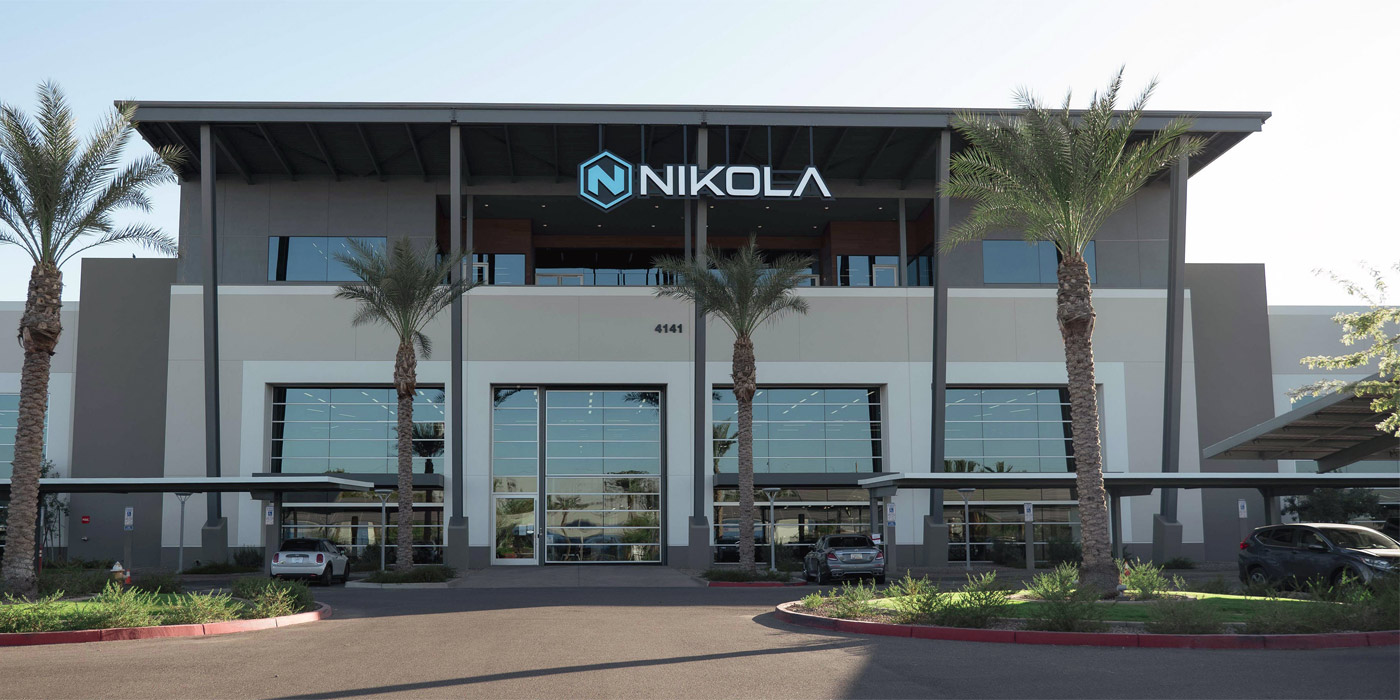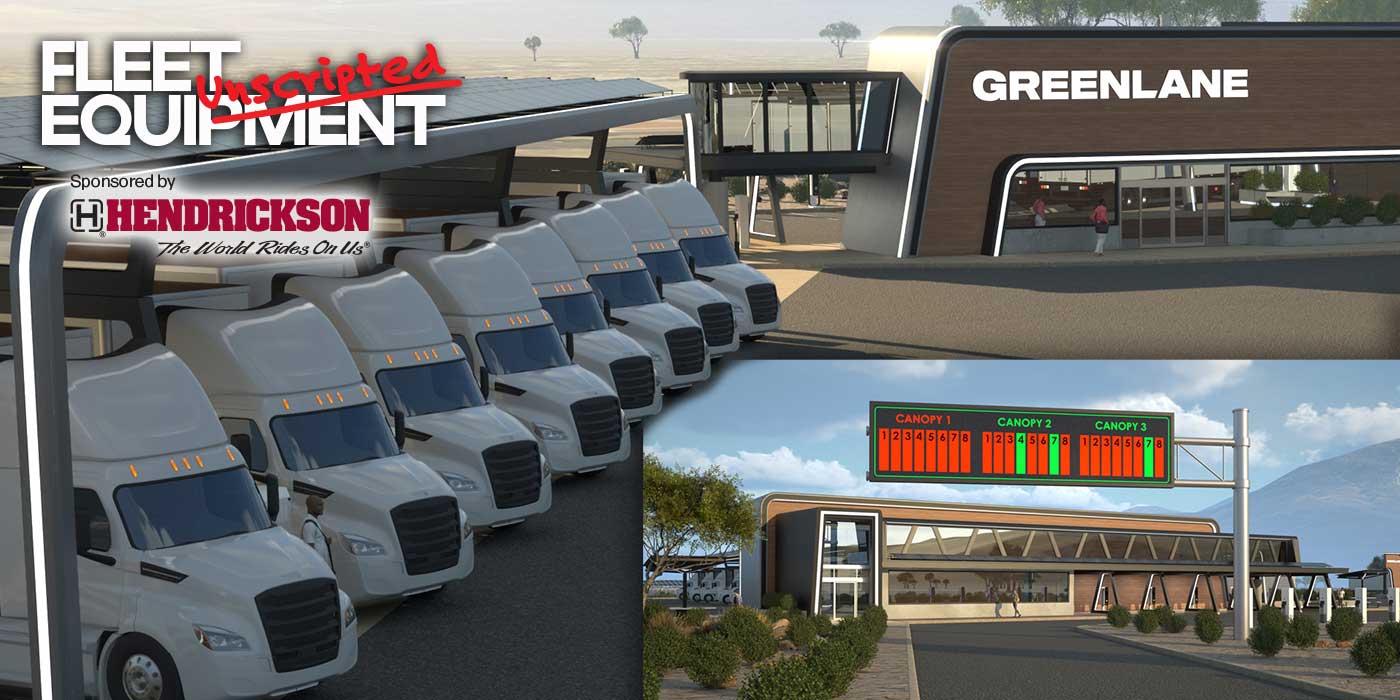Daimler Trucks has announced an autonomous Freightliner eCascadia technology demonstrator, combining battery electric drive and integrated autonomous driving technology into one truck.
The truck is based on a production BEV Freightliner eCascadia and is equipped with autonomous driving software from Torc Robotics and Level 4 sensor and compute technology. Daimler Truck says this will eventually enable Level 4 autonomous driving. Daimler Truck says the autonomous vehicle has the potential to evolve into a modular, scalable platform that is propulsion-agnostic for flexible use in different trucking applications. The goal, according to the company, is to offer customers a choice of the right vehicles for their specific business and transportation needs.
“By combining zero-emission and autonomous technologies in one product, we are testing solutions for challenges our customers are likely to face in the future,” said John O’Leary, president and chief executive officer of Daimler Truck North America. “We want to give them choices that allow them to do what they do best: keep the world moving today and well into the future. That takes a lot of foresight, questioning, testing, learning, improving and co-creating with our customers years in advance to ultimately find the right solution. This truck is a great example of the beginning of that development process.”
“Together with Torc, we are making significant progress towards introducing autonomous trucks in the U.S. by 2027,” added Joanna Buttler, head of global autonomous technology group at Daimler Truck. “While we target autonomous trucks with conventional propulsion technology for this first market launch, we always look further into the future. We will employ an iterative approach to the development, testing and optimization of autonomous-electric technology, while exploring the most promising use cases in collaboration with our fleet customers.”
eCascadia details
The battery electric Freightliner eCascadia went into production in 2022 and has now reached 6 million real-world miles in more than 55 fleets in the United States. According to Daimler, specifications include a battery that can be recharged to 80% capacity in as little as 90 minutes. The company offers several battery and drive axle options, providing a typical range of 155, 220 or 230 miles, depending on the specific configuration. The Freightliner eCascadia is equipped with the Detroit ePowertrain and comes standard with the Detroit Assurance suite of safety systems, including Active Brake Assist 5.
With this demonstrator, Daimler Truck says the autonomous sensor suite and compute power, currently being tested on the autonomous diesel Cascadia, is packaged to fit the smaller day cab configuration of the battery electric eCascadia. To ensure adequate cooling, Daimler Truck says its engineering team developed an advanced prototype air-cooling concept for the compute stack, which is positioned between the driver and passenger seats. According to Daimler Truck, customized software provides the autonomous system with control interfaces and feedback on vehicle status, while the in-house designed sensor bar cover, which incorporates cameras, lidar sensors and radar sensors, improves aerodynamic performance and provides better protection from damage and soiling. Four additional 12-volt batteries provide enough high voltage power to ensure uninterrupted operation and increased efficiency and safety.
Testing for the future
According to Daimler Truck, the autonomous eCascadia demonstrator provides a glimpse of future autonomous use cases, including shorter, repeatable routes with the use of zero-emissions infrastructure. Depending on the application, Daimler Truck says future autonomous trucks could also be powered by hydrogen-based propulsion technologies.
In the currently tested hub-to-hub application, the truck’s intent is to drive autonomously between freight centers along U.S. highway corridors. By identifying synergies between zero emissions and autonomous infrastructure in a future scenario, Daimler Trucks says the charging infrastructure and autonomous freight hubs could be combined to charge and load simultaneously, further enhancing efficiency for carriers.
The autonomous eCascadia technology demonstrator is designed with many commonalities with the production eCascadia, which Daimler notes has the benefits of being familiar to some customers.

